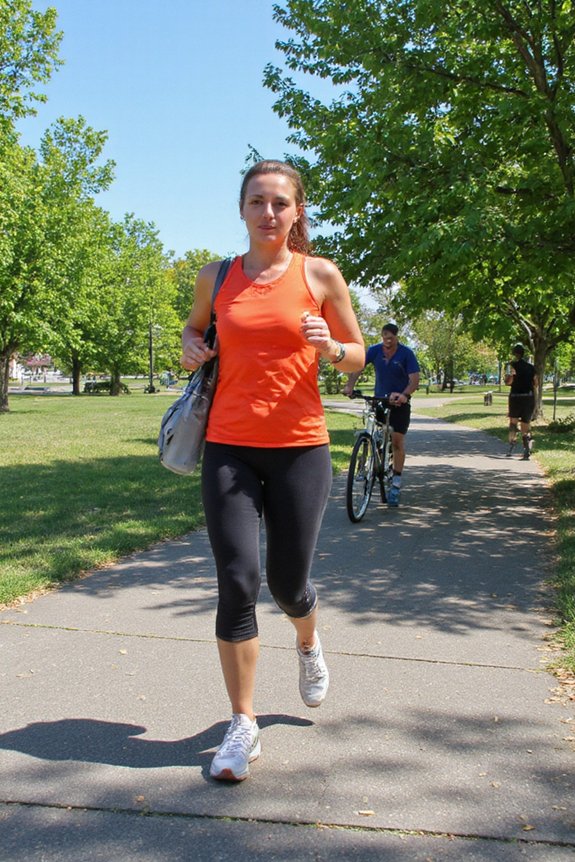Are you ready to transform your running experience? If you’re a woman who loves hitting the pavement, it’s essential to recognize common running form mistakes that could be affecting your performance and safety. Many women, in particular, face unique musculoskeletal challenges that can lead to injuries. The good news is, with a few adjustments, you can run more efficiently and enjoyably.
One of the most prevalent mistakes is overstriding. This happens when your foot lands too far in front of your body’s center of mass. It may feel natural, but it actually creates a braking effect, increasing ground reaction forces that stress your joints. You might find yourself feeling sore or fatigued more quickly than you should. Instead, focus on landing your foot more directly beneath your body. It’ll help maintain momentum and reduce the risk of injury. Overstriding increases force absorption by up to 30% per step, which can lead to even more fatigue over time. Gradual changes in running time can also prevent injuries as you adapt to your new form.
Overstriding can create a braking effect, increasing joint stress. Focus on landing beneath your body for better momentum and injury prevention.
Another issue is hip drop. Poor hip alignment during your run can lead to excessive stress on your pelvis and lower limbs. You might notice uneven muscle fatigue after a run, and that’s a sign your hips aren’t stabilizing properly. To counteract this, strengthen your core and hip muscles. Incorporating specific exercises into your routine will help you maintain better alignment, making your runs smoother and more enjoyable.
Then there’s the crossover mistake. If you’re crossing the midline of your body with each stride, you’re distributing stress unevenly on your joints and muscles. This can lead to unnecessary wear and tear, especially for women who already experience higher injury rates. To correct this, pay attention to your leg position as you run. Aim to keep your legs moving in parallel lines, which will enhance your balance and efficiency.
Keep in mind that up to 90% of long-distance runners experience injuries annually. You don’t want to be part of that statistic. Gradually increasing your running intensity and frequency can help your tissues adapt better. Start with walking and short running intervals, building your endurance safely and effectively.
Lastly, be mindful of your foot strike. While heel striking isn’t inherently bad, it can become problematic when combined with overstriding. Focus on a foot strike that aligns with your center of mass. By making these adjustments, you’ll not only run better but also reduce your risk of injury.









